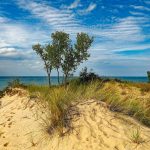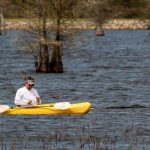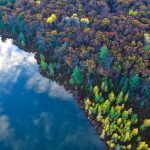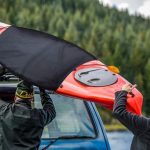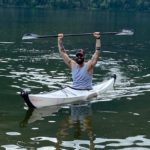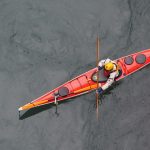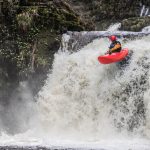Indiana is home to some of the best kayaking spots in the US. We’ve compiled a list of the best places for kayaking in the Hoosier State.
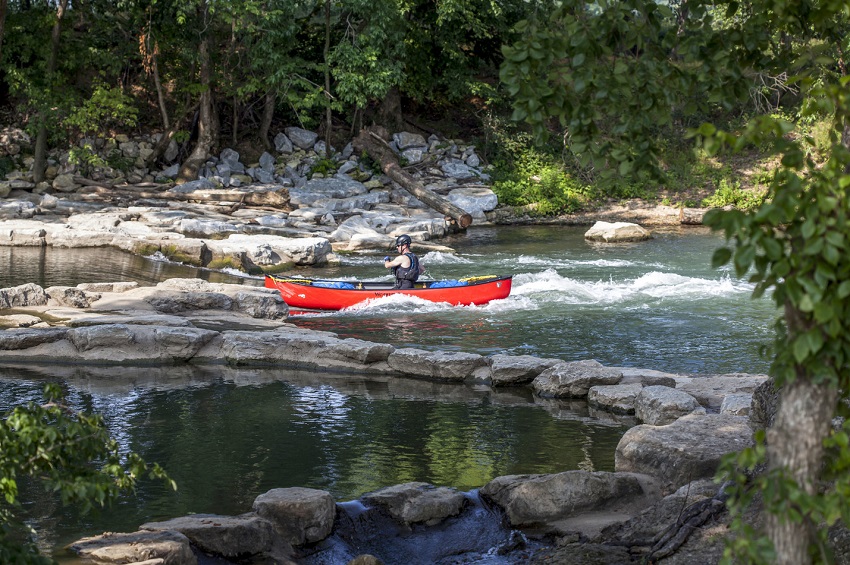
When you think of spectacular paddling destinations, Arkansas likely isn’t the first place that springs to mind.
But boy are you in for a surprise!
Arkansas is home to some truly gorgeous kayaking spots, secret creeks and secluded rivers, all mind-blowingly beautiful and a great place for a water adventure.
Below, I’ll share with you the best places for kayaking in Arkansas, as well as resources on how to find guided kayaking tours, tips for safe, smart paddling, and the rundown on the state laws you’ll need to follow when paddling in Arkansas. I’ll even answer a few of the most commonly asked questions so you’ll have all the important information necessary to prepare for your next kayaking trip to the great state of Arkansas.
15 Best Places to Go Kayaking in Arkansas
1. Buffalo National River
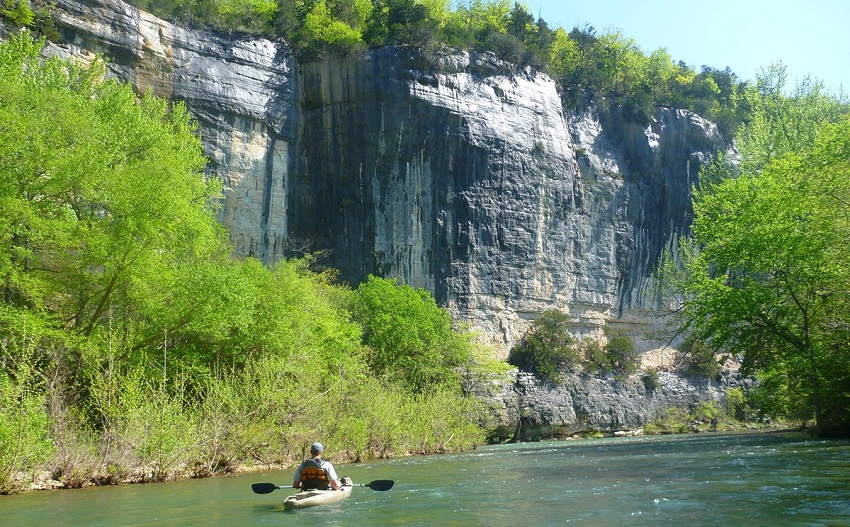
Did you know that Arkansas is home to the first national river in the country? That’s right, Buffalo National River is so exceptional that it was designated a “national river” in order to ensure it’s fully protected, maintaining the water quality, free flow, and the nature along its banks. Spend an hour or two paddling it, and you’ll see why it’s one of the most beautiful kayaking destinations in not just the state of Arkansas, but the entire United States.
The 135-mile river emerges from the Boston Mountains, and runs downstream until it merges with the White River. Along the way, it passes through Class II and Class III whitewater rapids, as well as a lovely calm 10-mile stretch (between Arkansas 7 and Highway 123) that is a perfect place for kids, families, and newbie kayakers to enjoy an easy paddle. It’s a beautifully preserved river that will enchant your senses and make you instantly feel at home in nature. And I guarantee you’ve never seen anything quite as spectacular as the 500-foot-high limestone bluffs bordering the river!
2. Mulberry River
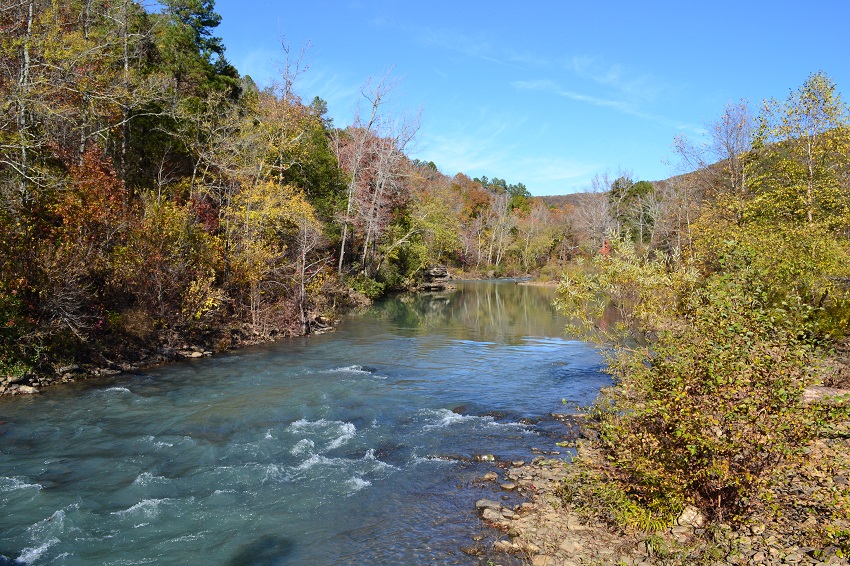
Looking for a serious adventure? Then head to the Mulberry River, one of Arkansas’ most famous whitewater paddling destinations! The river itself is 62 miles long, but 45 of those miles run through twenty different series of rapids, all rated between Class I and Class III. It’ll feel like being on the most exciting roller coaster of your life, and you’ll race down the river at truly impressive speeds.
When the water levels are just right, this is the #1 whitewater spot in the state, and one of the best-rated whitewater rapids in the country. Surprisingly, this is a destination to travel to over the colder months, with prime paddling between mid-October and mid-June. Just make sure you’ve got the skill to handle the terrifying and exhilarating challenge of these rapids.
3. Big Piney Creek
Big Piney Creek runs right through Ozark County, and it’s one of the calmest waterways around, perfect for a lazy day floating downstream with family or friends. Beginners will be instantly at home on these flat waters, and there’s just enough current that you’ll make progress without being rushed along. All along the way, you’ll bask in the beauty of nature and wildlife.
Fair warning: there are stretches that are not at all newbie-friendly. Some stretches—for example, the Treat to Long Pool section—run through rapids (some as tough as Class III) that are not for the faint of heart. For family days or relaxation, stick with the sections of the creek where the water is calm and the paddling is easy.
4. Lake Ouachita
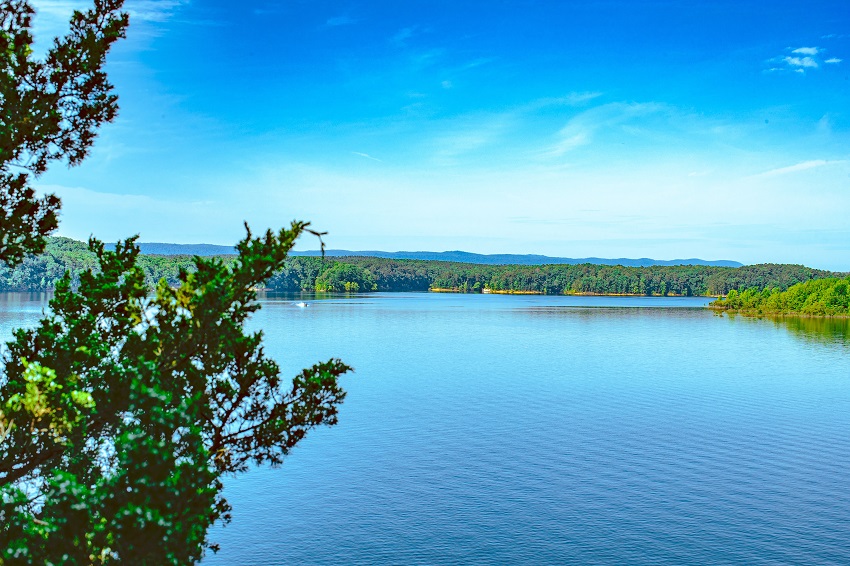
Get ready for a double adventure: both kayaking and snorkeling! That’s right, the waters of Lake Ouachita are so clear that people come from all around to snorkel here and enjoy the gorgeous underwater life. There are also paddleboarders, canoers, boaters, anglers, and people camping all along the lake’s shore.
Lake Ouachita is open all year-around, though it can be a bit on the chilly side in the winter, so make sure to dress accordingly if you want to get some winter paddling in. Surrounded by the Ouachita National Forest, you’ll find it’s one of the best lakes in the state to kayak, with some of the best views in Arkansas.
5. The Spring River
The Spring River is one of the few paddling spots in Arkansas that you can kayak all year around. Thanks to the fact that the river is fed from underground springs, the water will always be high enough for safe paddling. This makes it a very popular destination for kayakers, especially during the drier months when the water level in other rivers is low.
The river runs for 57 miles through both Arkansas and Missouri on its way to the Black River, and there are both newbie-friendly stretches of calm water and Class I and II rapids for more adventurous paddlers. As you’re traveling downstream, you’ll drift past rocky bluffs, deep forests, and natural habitats of an impressive range of wildlife. You’ll find the fishing on the river is excellent, provided you know all the hidden spots and fishing holes. It’s fed by Mammoth Springs, which keeps it to a fairly consistent 58-degrees all year long. On those blistering summer days when you want to escape the heat, this is where you’ll be glad to go for a swim or paddle.
6. Bull Shoals Lake
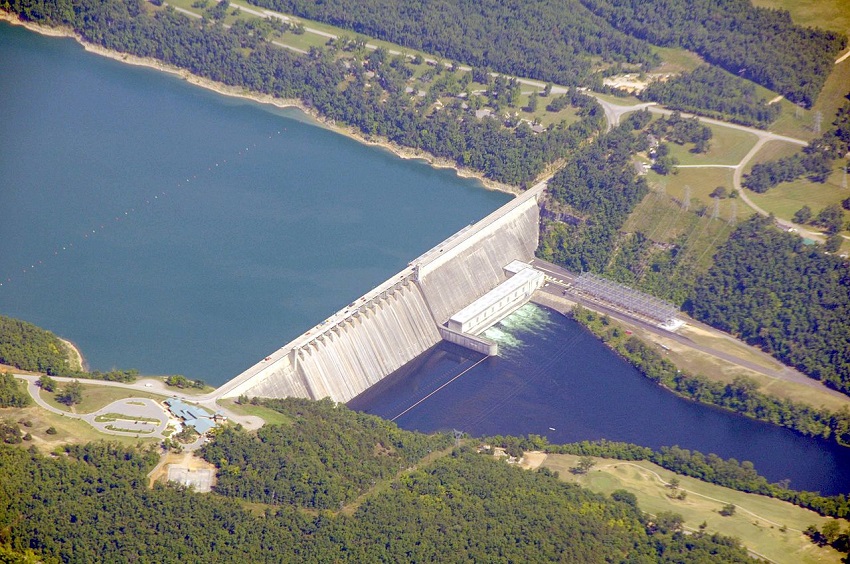
There are few things better than a lake day, especially if that lake happens to be Bull Shoals Lake. This lovely waterway is nestled in north-central Arkansas, deep in the picturesque Ozarks, and is along the path of the White River. It’s an amazing place to spend a day out on the water, a weekend camping, or many days exploring all the hidden inlets, fingers, and coves along the shoreline.
Kayak fishing is excellent here, with bass aplenty to reel in. Paddleboarders, boaters, and canoers will join you on the water, along with a few motorboats. Bird watchers and animal-spotters have plenty to keep their binoculars occupied, and the fact that the area around the lake is less developed means there is a raw, natural ambience that serves to accentuate the feeling of being away from the hustle and bustle of city life.
7. Cossatot River
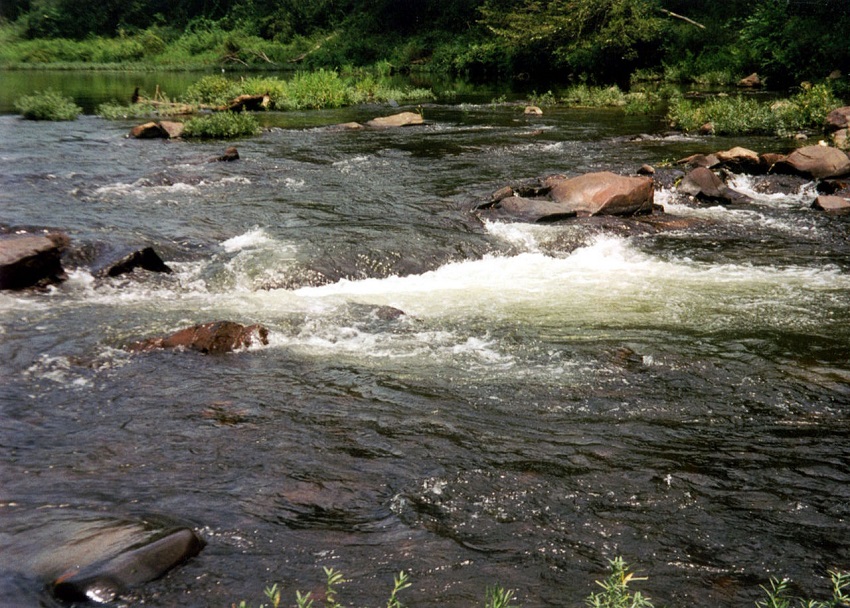
Any waterway named “skull crusher” (derived from the French cassé-tête) is guaranteed to deliver adventure on a truly epic scale. The rapids here range between intermediate-level Class II and experts-only Class V. You’ll find gut-wrenching drops of up to eight feet, immense boulders, strainers, and obstacles that will challenge even the most skilled paddler. In fact, the Cossatot River is rated the “most difficult whitewater stream in the state” by the U.S. Army Corps of Engineers.
Newbies are advised to steer clear, but whitewater kayakers will find this river offers breathtaking challenges found nowhere else in Arkansas. Within just 12 miles of river, you’ll have a once-in-a-lifetime adventure—every single time you make the run!
8. Kings River
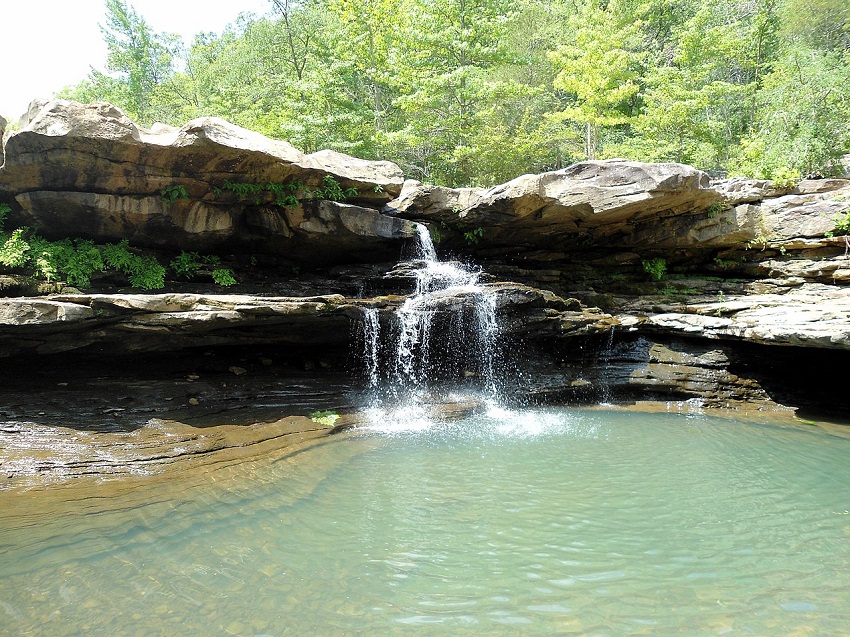
The Kings River is located right along the border between Missouri and Arkansas, and is home to some of the most beautiful natural views in the state. Towering trees, gorgeous flat water, and myriad wildlife and bird life surround you on all sides. When the sun is high and the day is clear, you won’t find a better place for a relaxing paddle with your family or buddies.
Fair warning: this is one of the most popular paddling destinations in the state, so prepare to share the water with a lot of other kayakers, anglers, canoers, and paddleboarders. However, even if you prefer to steer clear of the crowds, it’s worth making the trip just once to say you’ve kayaked the Kings River!
9. Illinois Bayou
Get ready for another challenge! This river is home to Class I and Class II whitewater rapids, including a few Class II+ sections that will test your mettle, reflexes, and paddling skills. There are even a few spots where high water levels can turn the rapids to Class III. Over the 18-mile run, you’ll find yourself in all sorts of danger (the good kind!) that will make every trip to the river a thrill ride.
But while you’re zipping downstream, try to spare a few glances for the land bordering the river. It’s home to some gorgeous dense forests and towering trees that will enchant your senses and be incredibly photo-worthy.
10. Boen Gulf Creek
Get ready for some serious challenges! This creek may be short–just over 10 miles–but it’s far from a calm paddle. Expect some powerful waterfalls, brutal undercut rocks, and rapids that will put your skills to serious test. Pay close attention to the Class IV and Class V stretches, where you’ll drop a whopping 650 feet in just under 3 miles.
This creek is not for the faint of heart, but experts will find it’s an absolute blast. You won’t find many rapids more thrilling in the entire state.
11. Cadron Creek
Cadron Creek is another river that offers both easy paddles and whitewater challenges. For the 38.5-mile stretch before Pinnacle Springs Campground, you’ll find there are no real obstacles or hazards to make your paddling trip difficult. But brace yourself, because once you’re past the springs, you’ll find yourself tackling Class I to Class III shoals, drops, channels, and pools.
Along the way, you’ll pass through steep-walled cliffs, looming pinnacles, deeply wooded riverbanks, and dark caves that beckon you to explore their depths. You’ll especially love coming in the spring time when the ice atop the bluffs begins to melt and turns into a gorgeous waterfall.
12. Siloam Springs Kayak Park
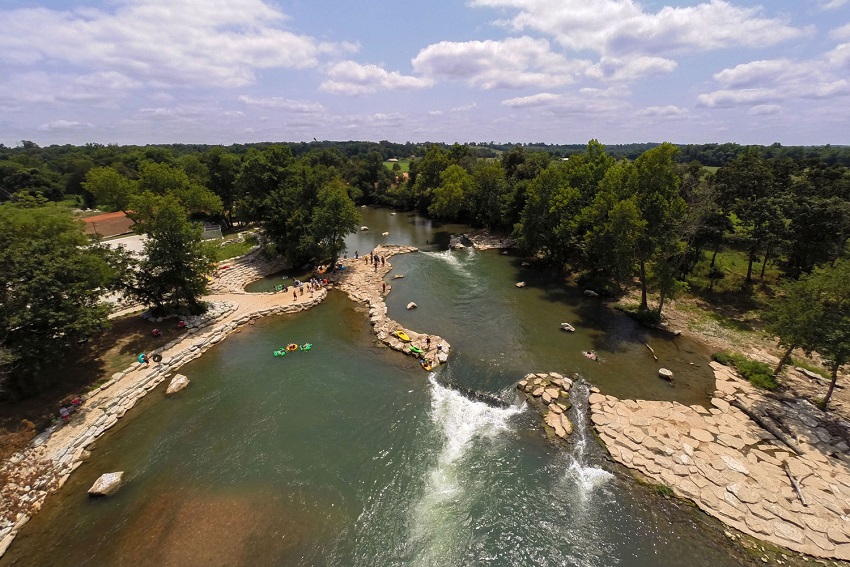
If you’ve never heard of a “kayak park” before, that’s because there are few in existence anywhere in the country—and the world! Thanks to a grant from the Foundation of the Walton Family, the Illinois River has been altered to create various levels of challenges for kayakers paddling the park. Here, you’ll find kayakers, canoes, paddleboarders, and rowing crews training most of the year around, and there will be plenty to keep you entertained every time you head out for a paddle.
Be warned: you may share the park with other water sports enthusiasts, including jet skiers and wind surfers. Luckily, there is plenty of water for everyone, and the park is home to lovely picnic spots, bioretention gardens, swimming pools, and boulders for climbing—enough to keep the whole family entertained for a weekend.
13. Beech Creek
Though this waterway is just 7.5 miles long, it runs through a gorge that churns it from a slow-moving waterway into rapids rated Class III to V. It’s considered one of the toughest whitewater kayaking spots in the Ozarks, a perfect place for expert-level paddlers to put their skills to the test in an extreme environment.
Prepare for long slides, huge waves, vicious holes, sharp drops, wicked ledges, and a current that flows dangerously fast. If you’ve got what it takes, it’s guaranteed to be an experience you will never forget—and want to come back for over and over.
14. Lake Dardanelle
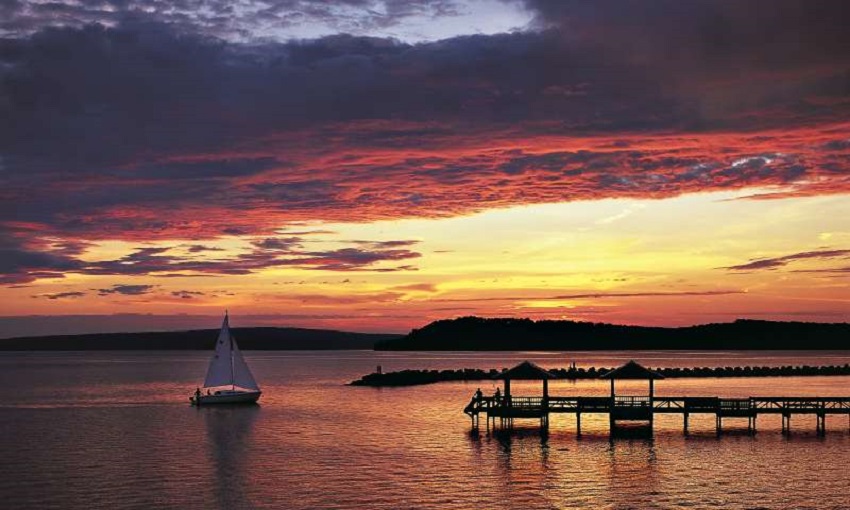
Looking for a calm, relaxing day on the water? Lake Dardanelle is definitely a destination to consider, then! This lake is the result of a dam built on the Arkansas River, so it’s as placid as it is massive. Along its shores, you’ll find lovely evergreen and hardwood forests, farmlands, even residential communities. The shoreline is even home to Arkansas’ only nuclear power plant—though, no surprise, it’s restricted water and not open to paddlers to drop in for a visit.
Lake Dardanelle State Park offers campgrounds and picnic tables, as well as parking and direct access to the water. There’s also excellent fishing available in the lake, so make sure to keep that tacklebox and fishing rod handy when out paddling. Families and beginner kayakers will be right at home on this enormous and spectacularly beautiful lake.
15. Beaver Lake
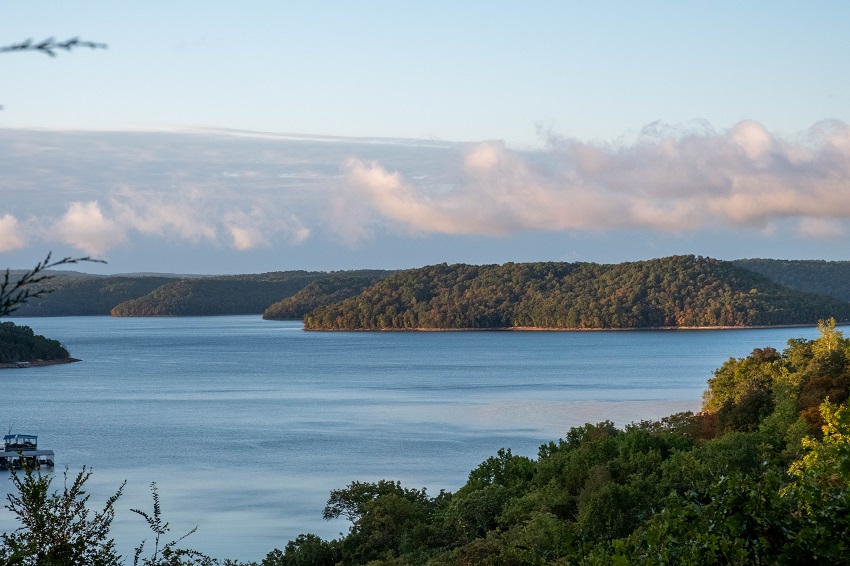
Located in Beaver Lake State Park, this lake is the perfect spot for a flatwater paddle. No challenges here, just crystal-clear water that affords you a mind-blowing view of the marine life that make their home here—including bass and catfish. The forests and trees surrounding the lake are also home to lovely campgrounds where you can pitch tents. However, for those who prefer more luxury accommodations, there are plenty of hotels located within a short drive of the state park.
Its location in the Ozark Mountains means that you can escape the chaos of city life and get away to the quiet calm of nature without being totally disconnected from the world. It’s peaceful and tranquil, an amazing spot to spend a kayaking vacation with your kids.
Kayaking Tours in Arkansas
If there’s one piece of advice that you’ll hear from pretty much every expert, it’s “Don’t paddle unfamiliar waters alone.”
Now, it’s safe to say that advice doesn’t refer to calm lakes or slow-moving rivers. Typically, it’s talking about whitewater rapids and challenging waterways, of which there are surprisingly many in Arkansas.
If you’re in-state to test your paddling skills, you’re likely going to want to put yourself in the (reasonable) danger of careening down fast-moving rivers and creeks, surviving drops and shoals, and evading boulders. Arkansas is home to some of the best rapids in the country, so of course you’re going to prove you’re up to the challenge.
But remember, “Don’t paddle unfamiliar waters alone”! For your safety, always make sure you’ve got a guide with you, someone who is familiar with the local waterways and has the skill to help you plan the best strategy for tackling the rapids.
It’s worth booking one of the many kayaking tours in Arkansas, if for nothing else than to work with someone whose expertise can A) maximize your chances of successfully completing the rapids, and B) possibly save your life in a pinch.
After all, tour guides who have dedicated their lives to kayaking the rivers, lakes, creeks, and streams of Arkansas will be best-suited to help you find the hidden spots and little-known secrets that can take your kayaking trip to the next level.
Here is a list of some of the most popular, best-rated kayaking tours in Arkansas to consider:
- Ouachita Kayak Tours (tours of Lake Ouachita, including the islands)
- Buffalo River Float Service (tours of Buffalo River)
- Rock Town River Outfitters (trips on the Arkansas River in and around Little Rock)
- Kings River Outfitters (tours of Kings River)
- Buffalo Outdoor Center (tours of Buffalo River)
Other resources that can help you find kayaking tours in Indiana include:
- Unearth Voyage – This website has compiled a list of some of the best floating/paddling spots in Arkansas (including many of those we shared above), but also includes outfitters that rent kayaks and canoes at each destination, as well as information on where to camp or stay.
- Trip Advisor – Using Trip Advisor, you can input the city/town/area where you want to find paddling trips, and you’ll be able to see all of the services that offer kayaking tours in and around that area. Who knows, you might even discover someplace new to paddle?
- Yelp – On Yelp, all you have to do is search “kayak tours” and select the city/area of your choice, and you’ll get a list of all the outfitters, kayak rental shops, and tour guides nearby. Definitely a good resource to help you find the best kayaking spots!
Tips for Safely Kayaking in Arkansas
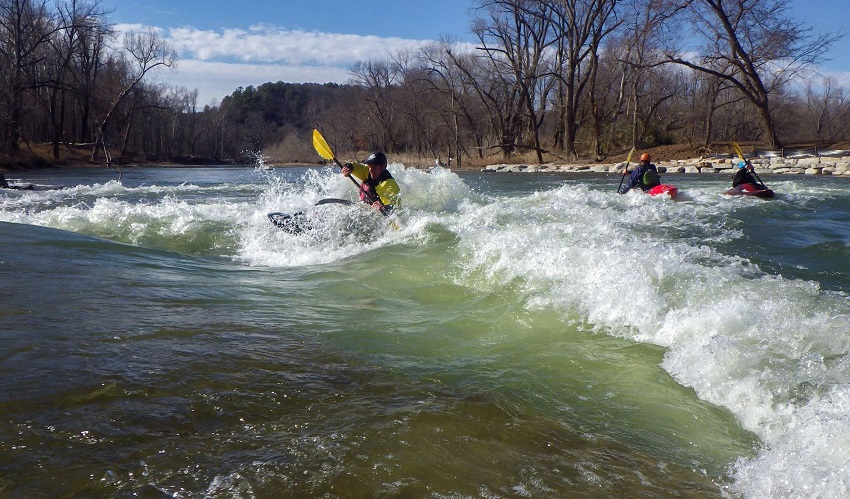
If you’re going to visit Arkansas on a paddling trip, here are some tips to help you make the most of your time in-state while also maximizing your safety on the Arkansas waterways:
Paddle to Your Skill Level
If you’re new to kayaking, stick with calm, flat water with gentle currents and no hazards. Work your way up to tackling Class I rapids, and only do so in the company of a guide or other experienced whitewater paddlers. The more you progress in your paddling skills, the more difficult challenges you can tackle. But don’t try to get ahead of yourself and attempt something you’re not yet trained to handle.
Arkansas has some of the most dangerous rapids in the country, some of which are rated Class IV+ and Class V. Even Class II and Class III rapids aren’t to be taken lightly. Make sure you know what you’re capable of handling, and stick to waters that match your skill level.
Know the Waterways
It’s tempting to launch into a river and “see what happens” as you head downstream, but that’s a surefire way to get yourself in trouble if you hit rapids above your skill level. Or, worse, you might find yourself far from your vehicle, civilization, and any way to get home.
Make sure to do plenty of research to learn as much as you can about the waterways where you’ll be paddling. Know what sort of challenges and hazards you might encounter, what the conditions are like at the time of year you’ll be paddling, and where to put in and take out. The more you know, the more you can prepare! Use our interactive map of places to go paddling while planning your next kayaking adventure in Arkansas.
Watch for Inclement Weather
Storms and heavy rainfall can make even slower-moving rivers dangerous. It’s important that you check the weather forecast before heading out on the water, and keep an eye on the sky throughout your paddling trip. If the rain starts falling hard and the water level starts rising, consider cutting the trip short.
And be aware that floods do occur throughout the year, though typically most often following heavy rainfall.
Check Water Levels
High water levels can make even normally “easy” rivers dangerous, and can turn beginner-friendly rapids into a much more perilous, faster-flowing challenge. Low water levels, on the other hand, can make it impossible to float because the river or creek is too shallow.
Never float during flood periods, and make sure to check the water levels on the U.S. Government’s Water Data website to make sure the river or creek where you intend to paddle is at safe levels. If the water is abnormally high or low, avoid going out—consider finding another, safer waterway.
Make Reservations Ahead of Time
During the busier months of the year (between May and September), Arkansas is flooded with visitors who are, like you, planning to get in some good kayaking time. This means that the kayak rental shops and outfitters have no more gear available to rent when you show up, or the stores are all sold out.
It’s strongly recommended that you book your tour or trip ahead of time. That means not only making hotel or campground reservations, but also reserving your equipment far in advance.
Be Aware of Fellow Boaters
You’re going to share the rivers, lakes, and creeks with fellow kayakers, paddleboarders, canoers, and, of course, motorboaters. Keep an eye out for other vessels, and give them a wide berth, especially if they are clearly beginner-level paddlers. Motorboats can be a hazard if you’re not careful, so make sure to steer well clear. Stick to the 1/3 of the river or lake nearest the shore, and let the motorized boats have the middle of the waterways.
Dress Appropriately
If you’re paddling in cold months, make sure to wear sufficiently warm clothing. That may mean a thermal base layer, a warming middle layer, and a waterproof top layer, along with gloves, boots, and a wide-brimmed hat.
If you’re paddling in hot months, protect yourself against the sun by wearing sunscreen, a long-sleeved T-shirt or wetsuit (anything with quick-drying and moisture-wicking fabric), and water shoes (which won’t cause your feet to overheat but will protect against rocks and debris in the water).
See our ultimate guide on what to wear while kayaking here.
Beware of Wildlife
Arkansas is home to a wide range of potentially dangerous animals—from black bears to alligators to brown recluse spiders. There are also a number of snake species that make their home in the state, including rattlesnakes, cottonmouths, and copperheads.
When heading out on a paddling trip, make sure to research your destination to know what sort of dangerous animals to expect. Never step anywhere you can’t see, otherwise you might end up getting bitten by a snake hiding in tall grass or murky waters.
Respect Nature
You’re going to enjoy all the wonder and natural beauty the state of Arkansas has to offer, but it’s important that you respect that nature. Take all your garbage with you, and make sure not to leave any litter or trash behind. Keep your foodstuffs secure in a cooler with the lids firmly fastened so they don’t spill if you capsize. If you’re drinking out on the water—be it alcohol, soda, or juice—avoid spills as much as possible to prevent the pollution of waterways. Always carry a mesh litter bag so you can carry away not only your own trash, but any additional trash you find.
There are many wonderful places in Arkansas that are carefully preserved largely untouched by humankind. Do your part to keep the state waterways clean so you’ll always have natural beauty to return to year after year.
Be Safe and Smart
Follow all the usual smart, safe practices for your paddling trips, including:
- Create a float plan of where you’ll be going, and leave it with someone who can call for help in case of an emergency.
- Always have a means of communicating, including a backup cellphone, long-distance radio, or GPS phone
- Never paddle on your own. Always travel in groups of AT LEAST two people.
- Bring plenty of food, water, and any gear you’ll need.
- Pack emergency clothing and supplies just in case.
Arkansas Kayaking Laws
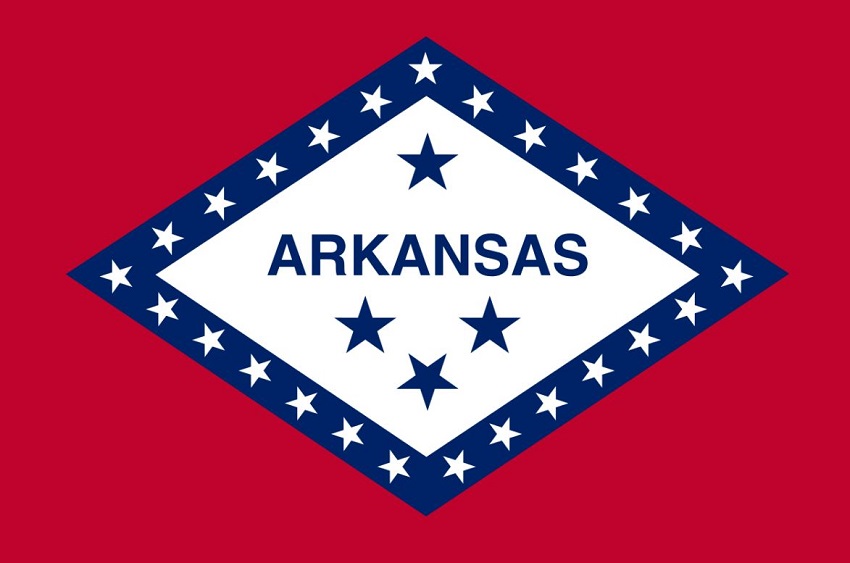
Kayaks are non-motor powered vessels
Because kayaks are considered “manually powered” vessels, there is no need for you to register them or obtain a license in order to paddle on Arkansas waterways.
However, if your kayak has an operational trolling motor mounted, then it is considered a motorized vessel and must be registered. You must also obtain a license to operate your kayak with a trolling motor.
Piece of advice: if you’re not going to USE the trolling motor, make sure to un-mount it so you can avoid the hassle of registering/obtaining a license. If you are caught on the waterways without a license and your motor mounted, even if it’s not currently operational, you can be fined.
There is no minimum age for operating a kayak
Anyone under the age of 12 must obtain a license to operate a vehicle with an engine 10 hp or higher. However. They must also be under the supervision of an adult (over the age of 18) while operating that vessel.
But, because kayaks are manually powered and don’t have an engine or motor, there is no minimum age for paddling a kayak. Even young kids can kayak if they want to!
Kayakers must have one lifejacket on board per person
The lifejacket must be U.S. Coast Guard Types I to IV, and it must be properly sized according to its wearer. Adults have to keep the lifejacket within easy reach and available, but don’t need to wear the jacket at all times. Children under the age of 12, however, must wear their lifejacket at all times.
Kayakers must carry lights at “low visibility times”
During the “low visibility times” between sunset and sunrise, you must have at least one white light on board your kayak. You can opt for additional lights—such as the green and red lights used by boats—but the minimum requirement is one white light (flashlight or lantern) that is visible in all directions.
Kayakers must carry a sound-producing device
All vessels shorter than 39.4 feet in length (which, yes, includes kayaks) are required to carry at least one sound-producing device. This can be either a whistle, horn, or airhorn. It’s necessary to signal for help in case of emergencies.
Kayaks aren’t required to carry visual distress signals (VDS)
In Arkansas, visual distress signals (such as flares) are not required aboard kayaks. However, it’s still a good idea to pack them just in case. The last thing you want is to be out in the dark in the middle of a huge lake/middle of nowhere with no way to signal for help.
Kayakers absolutely can get a BWI
“Boating While Intoxicated” is the boating equivalent of a DWI. If you’re an adult with a Blood Alcohol Level (BAL) of over 0.08%, you are considered intoxicated. Anyone under the age of 21 is considered intoxicated with a blood level over 0.02%.
Arkansas is one of the few U.S. states where it’s legal to drink when out on the water, though you can only drink “once underway”. However, just because you can drink on the water, that doesn’t mean Arkansas state laws won’t inflict harsh penalties for anyone who gets drunk/intoxicated while boating.
The penalties for a BWI are:
- Up to a $1,000 fine, up to 1 year in jail, and the possibility of losing your vehicle driver’s license for up to 6 months on your first offense.
- Up to a $3,000 fine, between 7 days (minimum) and 1 year in jail, and the possibility of losing your vehicle driver’s license for up to 24 months on your second offense.
- Up to a $5,000 fine, a minimum of 90 days in jail, and the possibility of losing your vehicle driver’s license for up to 30 months on your third offense.
Everyone who receives a BWI in Arkansas is required by law to complete either:
- An alcoholism treatment program, as chosen/approved by the Division of Behavioral health Services
- An alcohol education program, as chosen/approved by the Arkansas Highway Safety Program
Kayaking in Arkansas FAQs
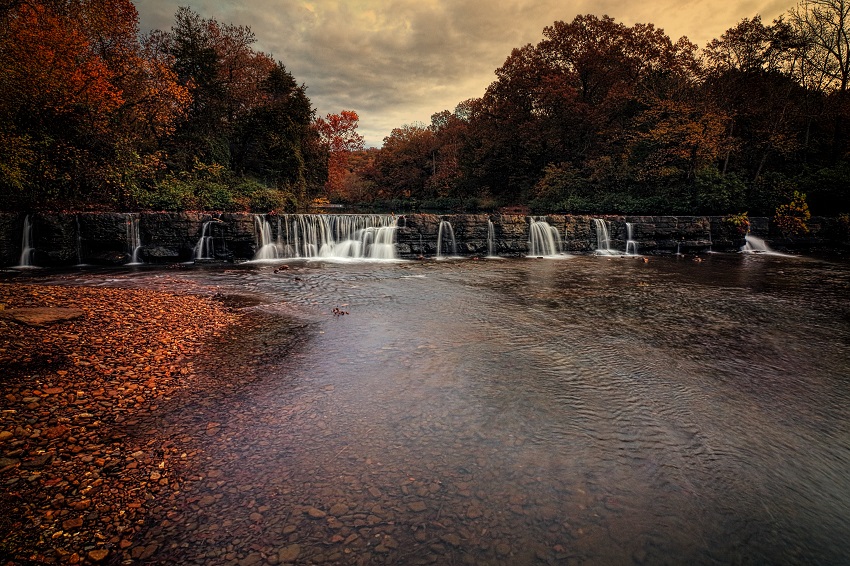
Absolutely! Typically, kayaking season on the Arkansas River is between April and September, with the best time being mid-June through mid-August. That is when the water is at optimum levels and the weather is perfect for spending days out on the water.
There’s even a lovely float trip you can take downriver. The five-mile stretch takes about 4 hours to complete—or you can speed up the pace by paddling and make it in an hour or so.
You certainly can—in fact, the Arkansas River is one of the best places in the state to paddleboard! The river is calm and easy to navigate, and there are many places where you can rent paddleboards and take a class on how to paddle, cross rivers, catch eddies, and navigate currents.
As you saw above, kayaks (like canoes, paddleboards, and rowboats) are manually powered and thus don’t need to be registered in order to operate on Arkansas waterways. You’ll find that some lakes and parks are only accessible by non-powered vessels (motorboats), so you’ll have the waterways all to yourself.
Because you are legally allowed to drink when on Arkansas waterways, you are allowed to have open containers of alcohol (bottles, cans, etc.) on your kayak. However, if you are visibly drunk, you can still be forced to take a sobriety test, and if your blood alcohol level exceeds the “safe” level, you will receive either a BUI or BWI, with all the fines and jail time mentioned above.

